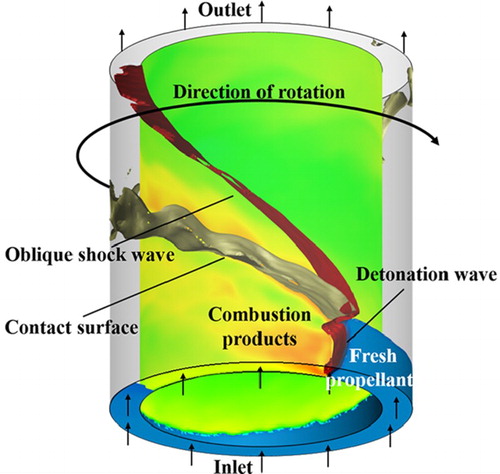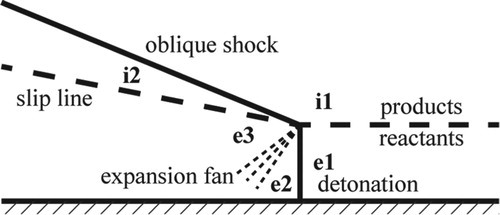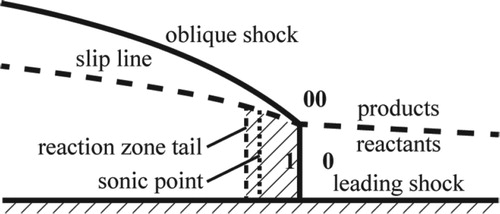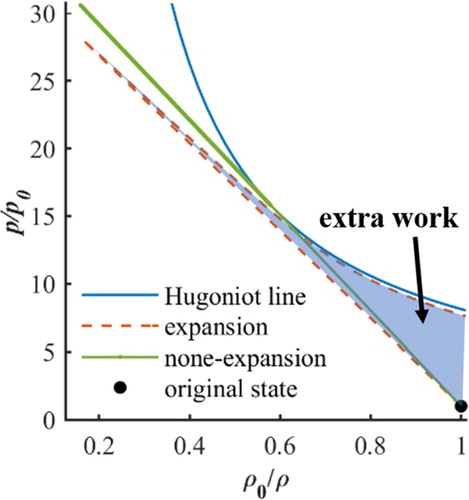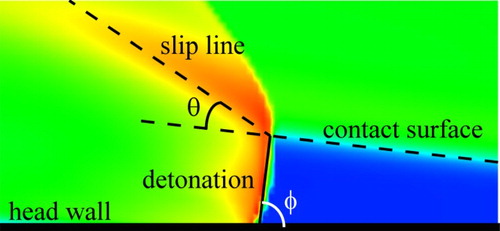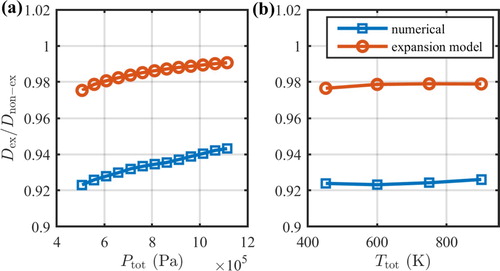Figures & data
Figure 2. Typical RDE flow field in a two-dimensional simulation a-fresh propellants; b-reaction products; c-reaction products from the previous cycle.

Figure 5. Profiles of the flow field calculated by the one-step kinetic model (a) pressure; (b) temperature; (c) expansion slope; (d) Mach number.
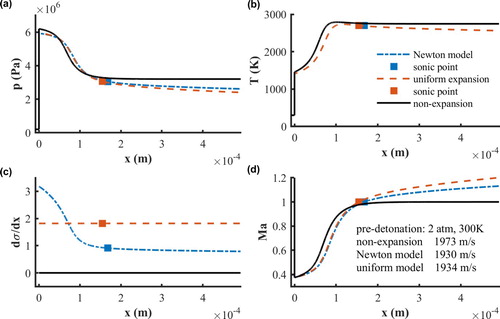
Figure 7. Normalised velocity of detonation (colour and line labels) under the variation of the pre-detonation state, where
denotes
(a) with a constant temperature of 450 K; (b) with constant pressure 2 atm.
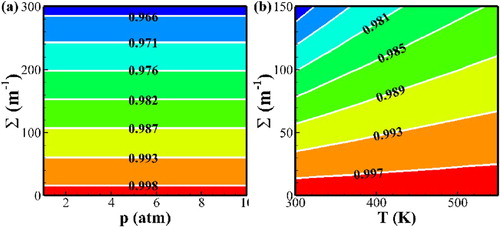
Figure 8. Comparison of the reaction rate when the pre-detonation temperature changes at 2 atm (a) reaction rate (b) extra work in reaction process in front of sonic point (In the p-v diagram, the extra work can be defined as the area between the leading shock process line and reaction-expansion process line shown in Fig. ).
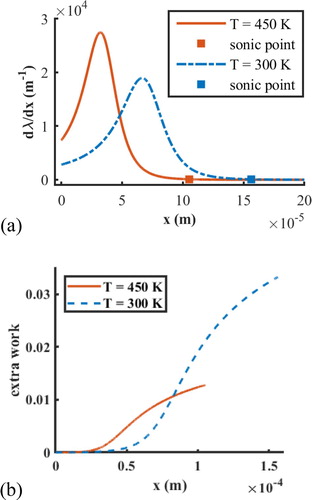
Figure 9. Profiles of the flow field calculated by two-step kinetics model with pre-detonation (a) pressure; (b) temperature; (c) expansion slope; (d) Mach number.
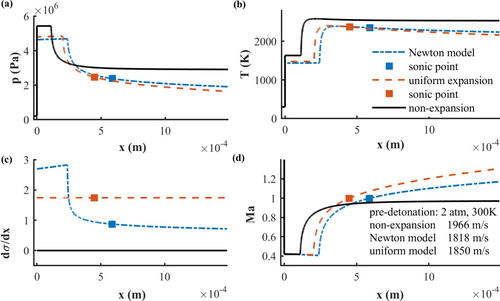
Figure 10. Normalised velocity of detonation and equilibrium reaction progress parameter (colour and line labels) under the pre-detonation state variation, where denotes
(a) the normalised deficit of velocities
with a constant temperature of 450 K; (b) normalised deficit of velocities
with constant pressure of 2 atm; (c) equilibrium reaction progress parameter
with a constant temperature of 450 K; (d) equilibrium reaction progress parameter
with a constant pressure of 2 atm.


